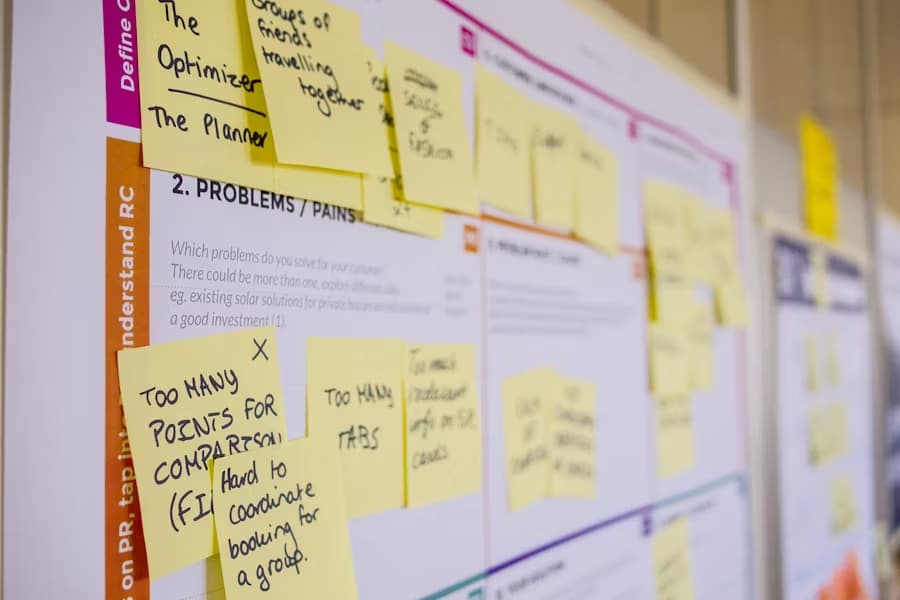In the whirlwind of modern life, where 24 hours often seem insufficient to tackle the endless list of tasks, individuals may find themselves ensnared in a perpetual state of rush and overwhelm. It’s in these moments that one might benefit from a reflective pause to evaluate daily habits, identifying opportunities to streamline activities and reclaim valuable time.
Despite the abundance of common time-saving advice, there exists a plethora of overlooked strategies that can significantly enhance one’s daily routine. Here are eight innovative methods to conserve time each day, often neglected by many. These techniques range from optimizing morning rituals to devising ingenious solutions for traditionally time-consuming tasks, enabling individuals to maximize every moment. Such strategies not only bolster productivity at the workplace but also open up leisure time for personal enjoyment and relaxation, enriching one’s quality of life.
What is Time Management?
Time management is defined as the deliberate organization and planning of how one allocates their time across various activities, aiming for both efficiency and effectiveness. It encompasses goal setting, prioritization of tasks, and the adoption of strategies to streamline day-to-day operations, thereby achieving more within shorter timeframes.
In an era characterized by rapid pace and high expectations, mastering time management is more crucial than ever. The ability to adeptly navigate the demands placed on one’s time can prevent feelings of being overwhelmed and falling behind. Through effective time management, individuals can enhance productivity, advance careers, enrich personal relationships, and allocate more time to hobbies and interests.
Why is Time Important in Our Daily Life?
The significance of time conservation in today’s bustling world cannot be overstated. Amidst the myriad of responsibilities and distractions competing for attention, effective time management emerges as a vital skill.
The primary advantage of conserving time is the boost in productivity it offers. By refining daily operations and concentrating on priorities, individuals can accomplish more within limited timeframes. This not only propels professional success but also liberates time for personal pursuits and pleasures.
Moreover, time-saving practices can significantly mitigate stress and augment overall well-being. The stress induced by constant rushing and feeling swamped adversely affects both mental and physical health. Cultivating skills in task prioritization and time optimization can alleviate stress and foster a more harmonious life balance. The societal implications of time efficiency extend beyond individual benefits, contributing to broader economic and environmental impacts. Efficient work practices can enhance societal productivity and yield positive outcomes across various domains.
Ultimately, the essence of valuing time lies in the empowerment it provides to fully embrace life. Effective time management enables individuals to savor each day, pursuing passions, nurturing relationships, and enjoying moments of relaxation. The rewards of time conservation are indeed manifold, touching every facet of life.
Why Should We Save Time?
The rationale for time conservation is multifaceted. Primarily, it empowers individuals to accomplish more within limited periods, granting them the freedom to dedicate themselves to meaningful activities. This is particularly crucial for those juggling dense schedules and numerous obligations. By embracing time-saving strategies, one can expedite goal achievement and enjoy cherished pastimes.
Additionally, conserving time plays a pivotal role in stress reduction and the enhancement of overall well-being. The toll of perpetual haste and overwhelm can be substantial, undermining both mental and physical health. Streamlining daily tasks not only curtails stress but also instills a sense of balance and control.
Efficiency and productivity stand to benefit significantly from time-saving measures. By identifying and eliminating inefficiencies, focus can be sharpened on pivotal tasks, leading to accelerated success and reduced effort. This not only fosters goal attainment but also enhances personal satisfaction.
The importance of saving time is underscored by its impact on goal realization, stress alleviation, and improved productivity. By adopting and integrating time-saving strategies into daily life, individuals can navigate their days more effectively, making the most of every moment.
Strategies for Efficient Time Management: Help Me Save Time
For individuals seeking effective time management strategies, the following advice is invaluable. Recognizing the significance of these strategies is essential, as they play a crucial role in maintaining organization and managing the overwhelming volume of emails, tasks, and responsibilities encountered daily. A well-implemented time management strategy can be the pivotal factor between success and failure in meeting deadlines.
Identifying Time-Consuming Activities
The journey to efficient time management begins with a meticulous analysis of how one allocates their time. Utilizing tools like BeforeSunset for precise task tracking offers insight into potential time-draining activities. Identifying such tasks—those that are either non-essential or could be executed more efficiently—enables an individual to streamline their daily routine, dedicating time to priorities. Strategies like task prioritization based on importance, employing productivity techniques such as time-blocking or the Pomodoro Technique, and delegating or outsourcing time-intensive tasks are effective in enhancing daily productivity. Additionally, setting email auto-replies during off-hours and employing checklists can further aid in eliminating inefficiencies.
Establishing Goals and Prioritizing Tasks
A cornerstone of time management is the establishment of clear, actionable goals, accompanied by a thoughtful prioritization of tasks. Setting specific objectives, rather than vague aspirations, clarifies the path towards achievement. Prioritizing tasks, possibly with the aid of tools like the Eisenhower Matrix, ensures that attention is focused on what is most critical, avoiding the pitfalls of distraction by lesser priorities. Effective goal setting involves breaking down larger goals into smaller, manageable tasks, making it easier to tackle complex projects step by step. This approach not only enhances focus but also provides a clear roadmap for progress. Additionally, regularly reviewing and adjusting your priorities ensures that your efforts remain aligned with your evolving goals and responsibilities. It’s important to differentiate between urgent tasks, which require immediate attention, and important tasks, which contribute to long-term objectives. Balancing these priorities is key to advancing your goals without falling prey to the tyranny of the urgent.
Crafting a Flexible Schedule
Designing a schedule that accommodates one’s most pressing tasks is vital. This involves allocating time judiciously to ensure priority tasks receive the focus they require, possibly dedicating mornings or specific days to these tasks based on when one’s energy and concentration peak. Flexibility within this schedule is also crucial, allowing for adjustments as unforeseen needs or opportunities arise. To implement this flexibility, it’s beneficial to incorporate buffer times between scheduled tasks, providing leeway to deal with interruptions or to extend work on tasks that require more time than anticipated. Additionally, understanding and leveraging your biological prime times—those periods of the day when you are most alert and productive—can greatly enhance your efficiency. Regularly reassessing your schedule to reflect current priorities and deadlines is also essential. This dynamic approach to scheduling acknowledges the fluid nature of daily life and work demands, ensuring that you can adapt to changes without sacrificing your productivity or well-being.
Leveraging Time-Saving Tools and Techniques
The adoption of productivity apps and methodologies can significantly enhance efficiency. Techniques such as time-blocking and the Pomodoro Technique, alongside productivity software, streamline workflow and focus. These tools not only organize tasks but also minimize distractions, maximizing productivity.
Delegating and Outsourcing Tasks
Identifying tasks that can be delegated or outsourced is a strategic approach to time management. This involves assessing tasks for their importance and personal proficiency, then assigning or outsourcing them to enhance efficiency. Selecting the right individuals or services for these tasks, considering their expertise, availability, and cost, is crucial for maximizing daily productivity. Effective delegation and outsourcing rely on clear communication of expectations and deadlines, as well as ongoing oversight to ensure tasks are completed satisfactorily. This strategy not only frees up your time for high-priority projects but also leverages the strengths and specialties of others, potentially leading to better outcomes than if tasks were completed solo. Here’s a step-by-step guide to streamline this process:
- Evaluate Task Significance: Determine which tasks are essential for your personal involvement and which can be handled by others;
- Assess Personal Proficiency: Identify tasks that fall outside your core competencies or would take you disproportionately longer to complete than someone with specialized skills;
- Choose Suitable Candidates: Look for individuals or services with a proven track record in the specific task or area you need assistance with. Prioritize reliability and quality over merely the cost;
- Clarify Expectations and Deadlines: When delegating or outsourcing, provide clear instructions and set realistic deadlines to avoid confusion and ensure timely completion;
- Monitor Progress: Establish a system for regular updates and feedback. This helps in keeping tasks on track and allows for adjustments as needed;
- Provide Feedback and Appreciation: Offer constructive feedback and show appreciation for completed work. This fosters a positive working relationship and encourages high-quality work in the future.
Incorporating delegation and outsourcing into your time management strategy not only optimizes your workload but also encourages collaboration and efficiency within your team or network. It’s a powerful way to enhance productivity while maintaining a focus on your most critical tasks.

Managing Distractions
Effective distraction management is critical for maintaining productivity and focus throughout the workday. This process involves both identifying and mitigating work-related distractions and setting boundaries for personal distractions, such as excessive social media use. Employing practical techniques can significantly enhance your ability to concentrate on tasks at hand. Here are steps to create a distraction-minimized environment:
- Identify Common Distractions: Start by noting which distractions most frequently interrupt your workflow. This could be anything from phone notifications to office noise;
- Implement Physical Solutions: For auditory distractions, consider using noise-canceling headphones. For visual interruptions, a privacy screen can minimize visual noise;
- Create a Dedicated Workspace: If possible, establish a workspace that is solely for work. This physical separation helps mentally distinguish between work and leisure activities;
- Limit Digital Interruptions: Use apps or software features that limit notifications or block distracting websites during work hours. Tools like “Do Not Disturb” modes are invaluable;
- Set Boundaries for Personal Distractions: Allocate specific times for checking social media or personal email, rather than allowing them to intrude throughout the day;
- Schedule Regular Breaks: Incorporate short, scheduled breaks to recharge. This can prevent the need for unscheduled breaks that often lead to distractions;
- Communicate Availability: If working in a shared space, communicate your focus times to others to minimize interruptions.
By systematically addressing both external and internal sources of distraction, you can significantly improve your concentration and efficiency. Techniques like creating a distraction-free workspace and using technology wisely allow for sustained periods of high productivity, making effective distraction management a key component of successful time management.
Implementing Time-Saving Habits
Incorporating habits that save time into one’s routine can make a significant difference. Strategies like batching similar tasks and automating repetitive processes not only streamline daily operations but also enhance overall efficiency.
Employing Time Management Strategies
Utilizing strategic approaches like the Eisenhower Matrix and the 80/20 rule can dramatically improve time management. These strategies aid in prioritizing tasks effectively, focusing on those that yield the highest impact, thereby maximizing productivity and success.
In conclusion, adopting these eight strategies can transform how one manages their time, leading to increased productivity, efficiency, and ultimately, the achievement of goals. Through careful planning, prioritization, and the use of effective tools and techniques, managing daily tasks becomes not just manageable but optimized for success.
FAQs:
Time management is the process of organizing and planning how to divide your time between specific activities. It’s crucial because it helps you work smarter, not harder, ensuring you get more done in less time, even when time is tight and pressures are high. Effective time management leads to improved efficiency and productivity, less stress, and more success in life.
Identifying time-wasting activities involves tracking your daily activities and noting which tasks consume a disproportionate amount of your time without contributing significantly to your overall productivity. Tools and apps designed for time tracking, such as BeforeSunset, can help you monitor how you spend your time and identify areas for improvement. Reflect on tasks that may be unnecessary or could be executed more efficiently, such as excessive email checking or social media usage.
Yes, several tools and techniques can significantly enhance your time management skills. Productivity apps like Todoist or Trello are excellent for organizing tasks and deadlines, enabling users to track their progress efficiently. Time-blocking is another powerful method, involving the allocation of specific blocks of time to certain tasks, which minimizes multitasking and distractions, fostering a more focused work environment. The Pomodoro Technique, where work is segmented into 25-minute intervals followed by short breaks, can significantly boost focus and prevent burnout. Additionally, automation tools such as Zapier or IFTTT (If This Then That) can automate repetitive tasks, saving valuable time. Email management techniques, such as setting specific times for checking emails or using filters and folders to organize your inbox, can also streamline your workflow and reduce time spent on unproductive tasks. Integrating these tools and techniques into your daily routine can lead to more productive days and a better work-life balance.
Setting effective goals involves utilizing the SMART criteria—specific, measurable, achievable, relevant, and time-bound. This approach ensures that your goals are clear and attainable within a specific timeframe. Once goals are set, prioritizing tasks becomes essential; this can be achieved by assessing their importance and urgency. Techniques like the Eisenhower Matrix are invaluable here, as they help categorize tasks into four quadrants based on urgency and importance, allowing you to focus on what truly matters. Additionally, regular review and adjustment of goals and priorities are crucial, as they ensure that your objectives remain aligned with your evolving needs and circumstances. Engaging in reflection sessions to assess the progress towards your goals can also provide insights into necessary adjustments or shifts in focus. Implementing these strategies can streamline your workflow, ensuring that your efforts are concentrated on achieving your most impactful goals.
To effectively manage distractions, it’s crucial to start by identifying their sources, whether digital, such as social media notifications, or physical, like noisy environments. Employing apps that block distracting websites during work hours can help maintain focus on tasks. Wearing noise-cancelling headphones can mitigate auditory distractions, creating a more conducive work environment. Setting specific times for checking emails and social media can minimize disruptions, allowing for more concentrated work periods. Additionally, creating a dedicated, clutter-free workspace can enhance focus and productivity. For digital distractions, leveraging features like “Do Not Disturb” modes on devices can prevent interruptions. Regularly scheduling breaks can also help manage the temptation of distractions by providing designated times to step away from work, thus maintaining overall productivity and focus. Implementing these strategies creates a more controlled work environment, enabling you to effectively minimize distractions and enhance productivity.
Delegating tasks is vital for effective time management, especially tasks that are time-consuming or outside your area of expertise. By outsourcing or delegating these tasks, you can focus on higher-priority activities that align more closely with your goals and strengths. It’s important to choose the right person or service for the task, considering their skills, reliability, and cost.
Creating a flexible schedule involves allocating blocks of time to tasks while allowing room for adjustments. Start by prioritizing your tasks, then schedule them according to their importance and your personal productivity patterns. Incorporate buffer times for unexpected tasks or delays. Remember, the key is to maintain a balance between structure and flexibility to adapt to changes without sacrificing productivity.



